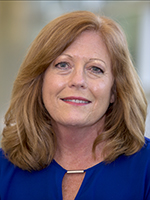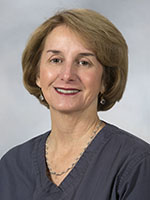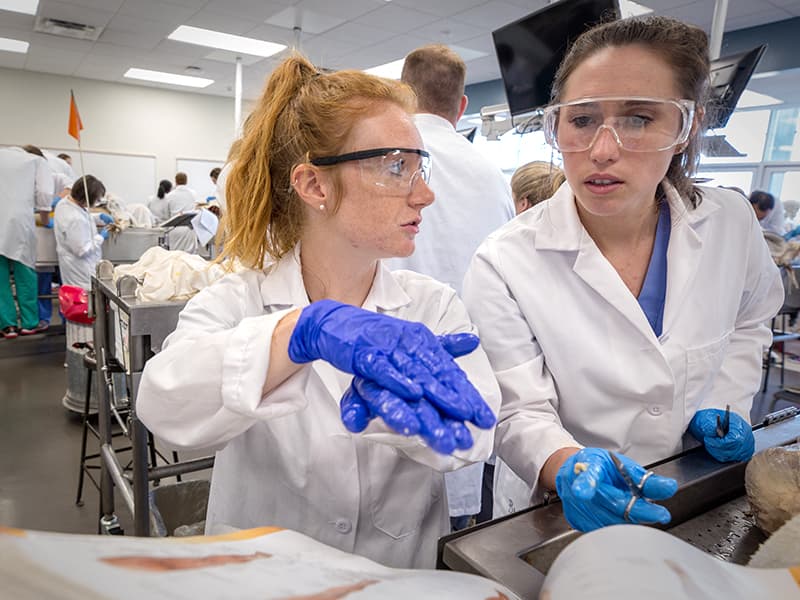Gross anatomy course brings D.O.T.s, D.P.T.s together

Doctor of Occupational Therapy and Doctor of Physical Therapy students in the School of Health Related Professions are charting a new course for their educational journey.
Collaboration among the faculty in these programs and the department of anatomical sciences has allowed the creation of a new learning reality.
Students are engaging in interprofessional education by seizing opportunities to learn human anatomy together benefitting them in areas where their professions overlap

Dr. Lisa Barnes, professor and chair of physical therapy, said when the school’s OT program transitioned to the doctoral level this year, it provided an opportunity for SHRP to offer gross anatomy class and lab training to students in both disciplines at the same time.

“When we evaluated our approach to the study of anatomy in both disciplines, we realized the course content was similar” said Dr. Emily McVey, professor of physical therapy and lead faculty for the course. “This is a foundational course within both curriculums. There are some challenges as we are in a new environment with a large number of students, yet the interaction between the students is beneficial to everyone.”
“Our graduates will be working side-by-side (as occupational therapists and physical therapists) during their careers,” Barnes said. “Today, in the educational world, they’ll be learning with and from each other side-by-side. We think this will be valuable to them in the future as they transition into clinical practice.”
Huang Pham a first-year O.T.D. student, said, “We’re all going through anatomy training together. We’re both learning exactly how the whole body works. Both disciplines are receiving the same ‘anatomical’ education.”

“The basis of both the OT and PT professions is the structure and function of the human body and we are delighted to offer this new learning experience to our students” said Dr. Christy Morgan, professor and chair of occupational therapy.
The OT and PT students, many of whom recently earned a bachelor’s degree, understand the value of sharing classroom and laboratory space with their colleagues of the future. They spend four days each week in lectures together as well as in lab groups.
Take Table 7 in the gross anatomy lab, for example. Two O.T.D. students, Pham and Brittany Chisolm of Southaven, receive instruction and practice dissection alongside three D.P.T. students, Ariana Gardner of Greenwood, Jacob Huff of Puckett and Katie Reid of Petal. Each agreed their shared experiences will serve them well in their chosen professions.

“A lot of times, PT and OT students don’t really interact with other disciplines that often,” Pham said. “To be here in such close quarters, to hear them talk about their classes while we talk about ours, gives all of us a better understanding of what factors are involved in each discipline.”
The summertime training is fundamental to both curriculums, according to McVey.
“OT becoming a doctoral-level program was a catalyst for us to combine this class, but the renovations the medical school has made to its lab space and their willingness to work with us and open their lab space to us has made it more feasible for us to offer the lab to both sets of students.”
During the labs, faculty from the OT and PT departments give demonstrations of dissections that are displayed on computer screens above each table. Then the students start to dissect under the supervision and leadership of the faculty.
They have to identify specific structures within the body. Each body is unique, so the structures within the bodies don’t always appear the same. The lab is valuable because it allows the students to see the diversity among the anatomical subjects
The group at Table 7 took quick note of the variation among anatomical subjects.
“Every body is different, so not every body is going to look the same,” Chisolm said. “The muscles (in our subject) were bigger and much different than anybody else’s.”
“A lot of bodies had pacemakers or chemo ports,” Reid said. “That wasn’t something I expected. You don’t think about how they may be different.”
For Gardner, the lab experience helps drive home what she has learned in the classroom.

“Actually taking what we learned in the lectures, seeing it in a body, helps us to register what we’ve learned,” she said. “Seeing the actual body parts, muscles and nerves, knowing where they are in the body, is important.
“When a patient comes to us with a problem, we can more easily tell where it is by where the pain is running through the body.”
“It is a unique opportunity for the OT and PT programs to be on a campus that also has a medical school with access to a large gross anatomy lab and anatomical specimens that might not otherwise be available,” according to Barnes.
First-year D.P.T. student Huff agreed.
“A lot of other programs don’t have a cadaver lab,” he said. “I feel like that’s a big plus.”
“The interprofessional cadaver experience is an exceptional part of the program,” Morgan said. “It’s unique and it sets us apart. By sharing this experience, students are able to collaborate meaningfully on the intricacies of the human body.
“When learning the same content in the same space, it actually lays the foundation for future interdisciplinary education in OT and PT courses.”
Perhaps the most valuable lessons OT and PT students learn from the combined program are derived from their initial encounter with their first “patient” in the gross anatomy lab.
“It’s their first ‘patient’ and the one from whom they will learn the most,” McVey said. “The opportunity to study the human body in a gross anatomy lab is a priceless gift the donors and their families have given to our students.”
- - -
Note: Anatomy education at the University of Mississippi Medical Center would not be possible without the assistance of the institution’s Anatomical Donor Program. For information about supporting the program call 4-1639, email bodydonation@umc.edu or visit /som/Departments%20and%20Offices/SOM%20Departments/Neurobiology/Resources/Body-Donation-Program/Overview.html.


